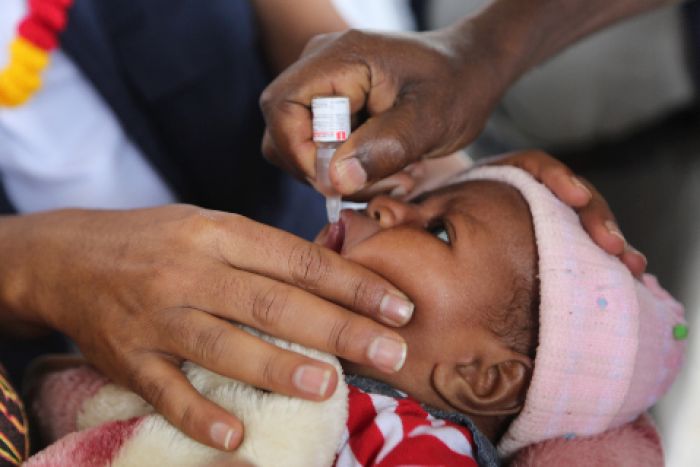World Polio Day is celebrated on October 24th. World Polio Day was established by Rotary International to commemorate the birth of Jonas Salk, who led the first team to develop a vaccine against poliomyelitis.
Many of us may have heard of polio, while some of us may know one or two people affected by this disease.
Thanks to vaccination programs, many parts of the world have achieved eradication of polio.
However Nigeria was still listed by the WHO as one of the three countries where Polio is endemic. This means that it is important for every child to receive polio vaccinations and also for us to be educated about this potentially deadly viral disease.
Polio is a highly infectious viral disease which used to be quite common in most parts of the world. Most people with polio don’t have any symptoms and won’t know they’re infected.
But for some people, the polio virus causes temporary or permanent paralysis, which can be life threatening.
How do you get polio?
You can become infected with the polio virus if you come into contact with the poo (faeces) of someone with the infection, or with the droplets spread through the air when they cough or sneeze.
You can also get the infection from food or water that’s been contaminated with infected poo or droplets.
If the virus gets into your mouth, it travels to your throat and bowels, where it starts to multiply. In some cases, it can also get into the bloodstream and spread to the nervous system.
The virus can be spread by someone with the infection from about a week before any symptoms develop, until several weeks afterwards. Infected people who don’t have any symptoms can still pass polio on to others.
Symptoms of polio
Most people with polio won’t have any symptoms and will fight off the infection without even realising they were infected.
A small number of people will experience a flu-like illness 3 to 21 days after they’re infected.
Symptoms can include:
- a high temperature (fever) of 38C (100.4F) or above
- a sore throat
- a headache
- abdominal (tummy) pain
- aching muscles
- feeling and being sick
- These symptoms will usually pass within about a week.
In a small number of cases, the polio virus attacks the nerves in the spine and base of the brain. This can cause paralysis, usually in the legs, that develops over hours or days.
The paralysis isn’t usually permanent, and movement will often slowly return over the next few weeks and months.
But some people are left with persistent problems. If the breathing muscles are affected, it can be life threatening.
Complications caused by polio
Although polio often passes quickly without causing any other problems, it can sometimes lead to persistent or lifelong difficulties.
A few people with the infection will have some degree of permanent paralysis, and others may be left with problems that require long-term treatment and support.
These can include:
- muscle weakness
- shrinking of the muscles (atrophy)
- tight joints (contractures)
- deformities, such as twisted feet or legs
There’s also a chance that someone who’s had polio in the past will develop similar symptoms again, or worsening of their existing symptoms, many decades later. This is known as post-polio syndrome.
Treating polio
There’s currently no cure for polio. Treatment focuses on supporting bodily functions and reducing the risk of long-term problems while the body fights off the infection.
This can include bed rest in hospital, painkillers, breathing support and regular stretches or exercises to prevent problems with the muscles and joints.
Polio vaccination
The polio vaccination is offered as part of the WHO childhood vaccination programme.
It’s given by injection in 5 separate doses. These are normally given at:
- 8, 12 and 16 weeks of age – as part of the 6-in-1 vaccine
- 3 years and 4 months of age – as part of the 4-in-1 (DTaP/IPV) pre-school booster
- 14 years of age – as part of the 3-in-1 (Td/IPV) teenage booster
You can also get vaccinated at any point if you haven’t been fully vaccinated before, even if you’re not travelling somewhere where there’s a risk of infection.

Thanks to efforts made by the WHO and the Global Polio Eradication Initiative to make polio vaccines available in all parts of the world, the globally recorded numbers of polio infected cases have reduced considerably from 350000 in 1988 to just 22 in 2017.
This shows clear evidence of the need for vaccines and why you should ensure that you and every one you know understands how beneficial vaccines are to the health of every human being.








